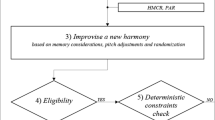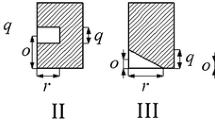Abstract
In structural engineering thesystem effect is known as the possibility of transversal collaboration among parallel load-bearing elements due to mechanical load sharing.
Thestatistical system effect, related to the variation of strength within structural timber elements, is investigated in this paper. The system investigated is a roof truss of W-type. The strength variation within and between timber members is described with a statistical model based on stochastic variables representing position of weak sections and length of weak regions, strength of weak sections and strength between weak sections. With the statistical model, the cumulative distribution of a Combined Stress Index (CSI), which is a measure of the stress levels in the truss, is determined with Monte Carlo simulations. The results from the simulations are used to determine the reliability level of the truss considering the effect of within member variation of the timber strength. It is shown that the load bearing capacity of a truss is increased significantly for a given reliability level since the probability is low that sections with locally high stresses will coincide with weak sections. The increase in the estimated load bearing capacity for a W-truss is of the order 15–20% for spruce of Scandinavian origin and 30–35% for Radiata Pine.
Résumé
Dans la technique des ponts et charpentes, l'effet de système est connu comme étant la possibilité de renfort transversal entre les éléments porteurs parallèles en raison du partage mécanique des charges. L'effet de système statistique, lié à la variation de la résistance au sein d'éléments en bois de construction, est examiné dans cet article. Le système étudié est une ferme de comble de type W. La variation de la résistance à l'intérieur des éléments en bois et entre ces éléments est décrite à l'aide d'un modèle statistique basé sur des variables stochastiques représentant la position des sections faibles et la longueur des zones faibles, la résistance des zones faibles et la résistance entre les zones faibles. Avec ce modèle statistique, la distribution cumulative d'un Index de Contraintes Combinées (CSI) qui mesure les niveaux de contrainte dans la ferme, est déterminée par des simulations Monte Carlo. Les résultats issus de ces simulations sont utilisés pour déterminer le niveau de fiabilité de la ferme, prenant en considération l'effet, au sein des éléments, de variation de la résistance du bois de construction. Il est démontré que la capacité de charge portante pour une ferme de type W est de l'ordre de 15–20% pour le pin de Scandinavie et de 30–35% pour le pin Radiata.
Similar content being viewed by others
References
Foschi, R. O., Folz, B. R. and Yao, F. Z., ‘Reliability-based design of wood structures. Structural Research Series’, Report No. 34 (Dep. of Civ. Eng., University of British Columbia, Vancouver, 1989).
Bodig, J., ed.., ‘Reliability-based design of engineered wood structures’, NATO ASI Series E— Vol. 215 (Kluwer Academic Publ., Dordrecht, 1992).
Adjanohoun, G., Castéra, P. and Rouger, F., ‘Reliability based design of timber structures’, Workshop, Paris, October 2–3 (CTBA Paris, 1997).
Taylor, S. E. and Bender, D. A., ‘Stochastic model for localized tensile strength and modulus of elasticity in timber’,Wood and Fiber Science 23 (4) (1991) 501–519.
Leicester, R. H., Beitinger, H. O. and Fordham, H. F., ‘Equivalence of in-grade testing standards’, CIB-W18A-Timber structures, Paper 29-6-2 (Bordeaux, 1996).
Isaksson, T., ‘Length and moment configuration factors’, CIB-Q18A-Timber structures, paper 31-6-1 (Savolina, 1998).
Isaksson, T., ‘Modelling the variability of bending strength in structural timber. Length and load configuration effects’, Report TVBK-1015 (Dep. of Structural Engineering, Lund University, 1999).
Boverket, ‘Construction rules for engineering works’ (Boverkets konstruktionsregler), BFS 1993:58, 1998. Only available in Swedish.
Hansson, M. and Thelandersson, S., ‘Capacity of timber roof trusses considering statistical system effects’, Holz als Roh- und Werkstoff, in print (Springer-Verlag, 2001).
Riberholt, H., ‘Analyses of timber trussed rafters of the W-type’, CIB-W18A-Timber structures, Paper 23-14-1 (Technical University of Denmark, 1990).
Höglund, T., ‘Approximate method in design of columns under axial load and bending moment’ (Approximativ metod för dimensionering av böjd och tryckt stång) (Kungl. Tekniska Högskolan, Stockholm, 1968). Only available in Swedish.
Larsen, H. J. and Riberholt, H., ‘Timber structures’ (Trækonstruktioner), (2nd edition SBI-report 135. Danish Building Research Institute (1988) (in Danish).
Gloss, P., ‘Solid timber-Strength classes’, Timber Engineering STEP 1 (Centrum Hout, 1995).
Buchanan, A. H., ‘Strength model and design method for bending and axial load interaction in timber members’, Ph.D.-thesis (Dep. of Civ. Eng., University of British Columbia, Vancouver, 1984).
Madsen, B., ‘Structural behaviour of timber’ (Timber engineering LTD, Vancouver, 1992).
EN 384, ‘Structural Timber— Determination of characteristic values of mechanical properties and density’ (1995).
Riberholt, H., ‘Proposal for Eurocode 5 text on timber trussed rafters’, CIB-W18A-Timber structures, Paper 23-14-2 (Technical University of Denmark, 1990).
COMREL & SYSREL: Users Manual, RCP Consult, http://www.strurel.de (Germany, 1997–1998).
NKB., ‘Guidelines for load and safety regulations for structural engineering’ (Retningslinijer for last- og sikkerhedsbestemmelser for bærende konstruktioner), NKB skrift nr 55 (1987). Only available in Danish.
Author information
Authors and Affiliations
Additional information
Editorial Note Prof. Sven Thelandersson is a RILEM Senior Member.
Rights and permissions
About this article
Cite this article
Hansson, M., Thelandersson, S. Assesment of probabilistic system effects on the reliability of timber trusses. Mat. Struct. 35, 573–578 (2002). https://doi.org/10.1007/BF02483126
Received:
Accepted:
Issue Date:
DOI: https://doi.org/10.1007/BF02483126




